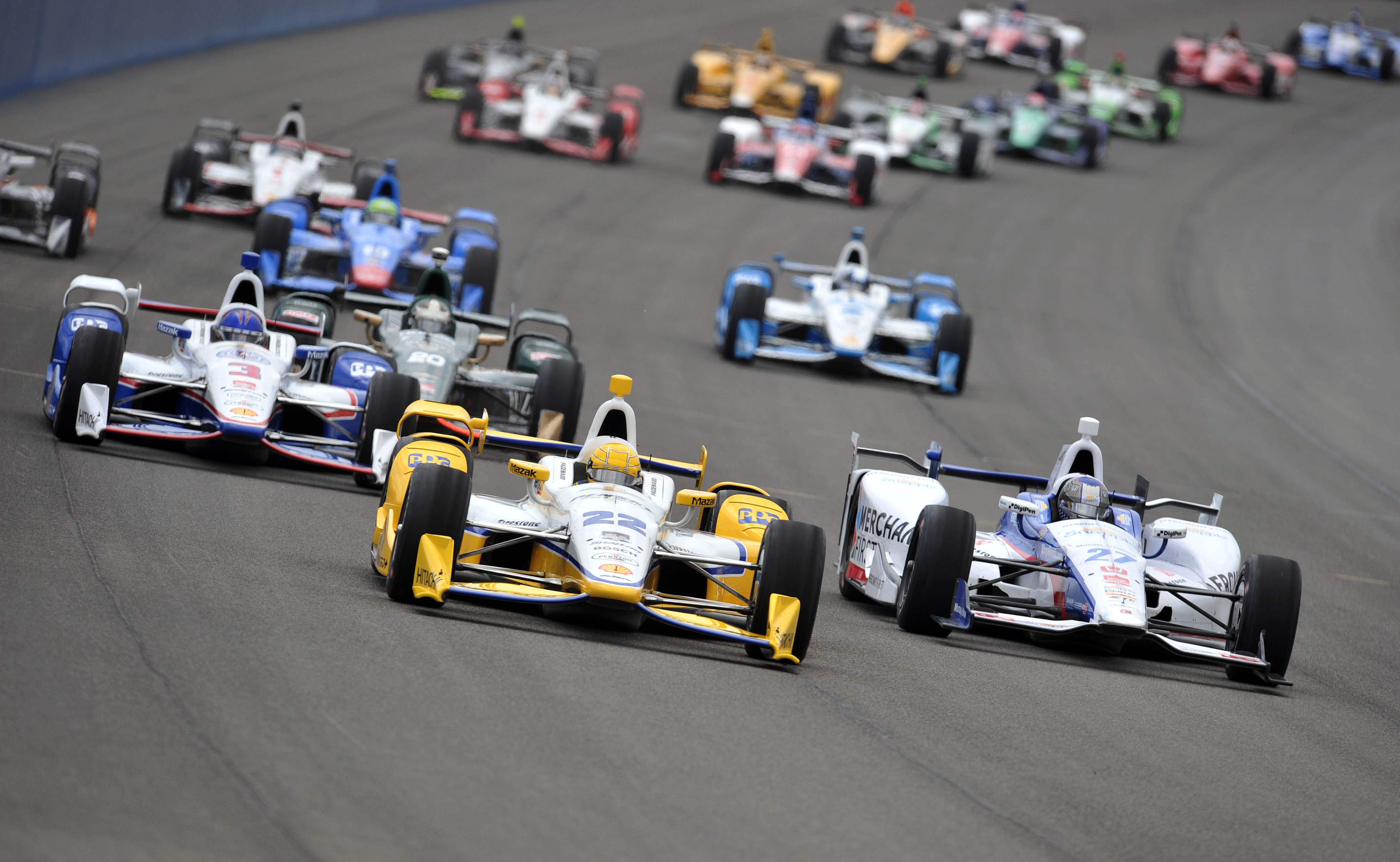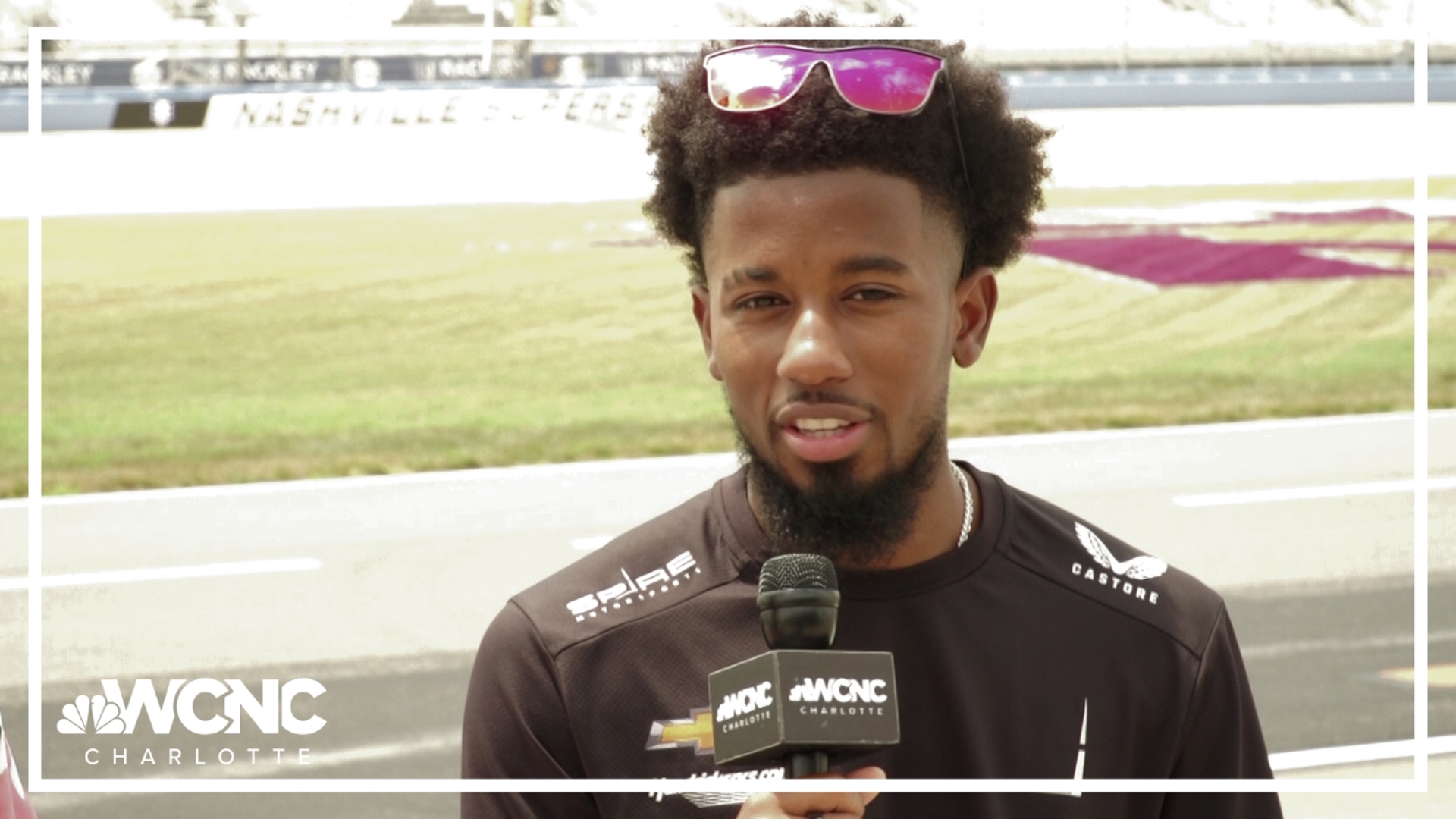The CEO of IndyCar said Wednesday that the series went too far with the rules package for last weekend's race at California, where many drivers sharply criticized what they said was dangerous pack racing.
Despite the admission, chief executive Mark Miles warned that criticism of IndyCar by its teams and drivers won't be tolerated going forward.
The Saturday race at Fontana was largely considered one of the most entertaining races in recent memory because of the flag-to-flag competition. At times, drivers were five wide, dicing for position as IndyCar saw a record number of passes for the lead.
But there were multiple complaints about the dangers of pack racing on an oval track, with competitors questioning the safety and evoking the 2011 crash in Las Vegas that killed Dan Wheldon.
Miles called the criticism "damaging" to IndyCar - particularly following an event that was embraced by fans. He said IndyCar has been too lax until now about allowing stakeholders to damage the brand.
"I do think we need to be more forceful in ensuring that no one individual or individuals are really damaging the value," Miles said. "I'm not pleased with some of (the comments). I'm not naming any names, and I've said it's incumbent upon us to be a responsible, responsive, intelligent sanctioning body. I will change this culture to some extent going forward by being more activist, and whether we're pounding our chests about that or not, you can be sure it's going to happen if it needs to."
A short time later, IndyCar fined defending series champion Will Power $25,000 and placed him on probation for the rest of the season for directing improper language or gestures at a series official. Power shoved a medical worker after a late-race crash, and he later told the reporters the racing was "crazy."
The race was breathtaking in that the drivers raced almost start to finish in close quarters at high speeds that led to several banging wheels. The conditions were created in part by the rules package set by IndyCar, which made a change in the downforce levels to combat expected high temperatures.
Indianapolis 500 winner Juan Pablo Montoya warned the day before the race that the rules were going to create pack racing, but an unofficial poll by IndyCar of other drivers indicated few thought it would be too dramatic.
Instead, the racing was exactly what Montoya had predicted, and he was one of the many drivers who complained after Graham Rahal's victory. Wheldon was killed in the opening laps of the 2011 season finale when his car sailed airborne into a fence at Las Vegas, launched over spinning cars from an accident in the pack ahead of him.
Miles said IndyCar's competition officials agree the series was too aggressive with the rules.
"Our folks believe that there are two primary reasons that the racing was so tight: One was that we probably did go a step too far with the downforce that we allowed," Mile said. "The other was that it ended up being a much cooler race than expected and obviously temperature has something to do with it."
The race has created a divide between drivers who find the pack racing too tense and too much of a reminder of Wheldon's death, and fans who simply loved the compelling action. Not all drivers railed against the racing. Among the supporters is Ed Carpenter, the stepson of series founder Tony George Jr., who indicated his rivals should retire if they don't like close racing.
Miles would prefer some of that conversation be handled in-house.
"This is an inherently dangerous sport," he said. "We've got to be the kind of sanctioning body that the drivers feel comfortable coming to and believe that smart people listen and make the best judgments possible. Not all the drivers have the same point of view about anything. I think we have demonstrated that we do care about safety, and fundamentally also about growing this sport and attracting more fans."
IndyCar's two most exciting races this year both bordered on the edge of danger. Three cars went airborne during practices for the Indianapolis 500, leading to a rule change the morning of qualifying. It worked as all cars remained on the track during the 500, but the attention paid to the incidents led to the highest television rating in nearly 10 years.
Then came Saturday, which outdid the Indy 500 in terms of lead changes and wheel-to-wheel racing.
"It was compelling, it was adrenaline-filled, it was hard to look away," Miles said of Fontana. "At times it was hard to watch. It was so exciting."


